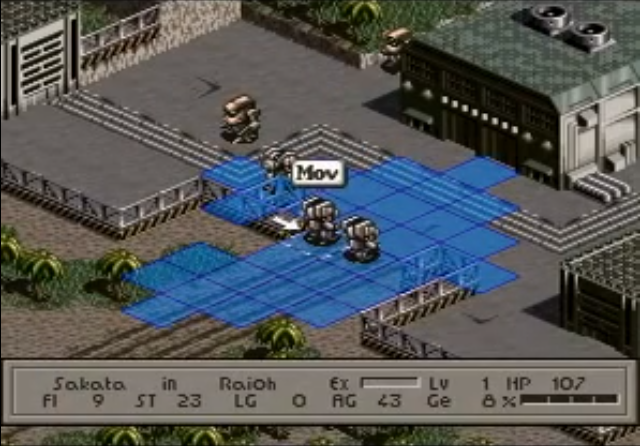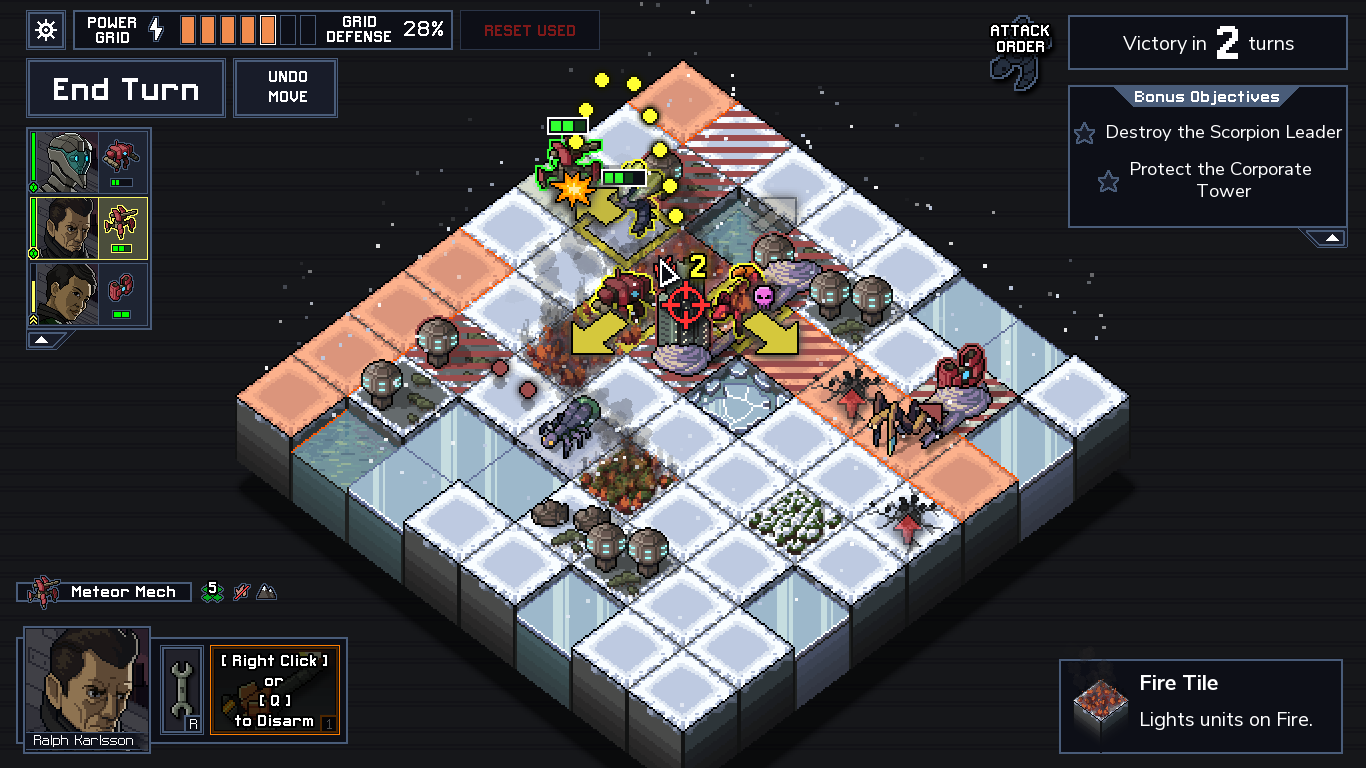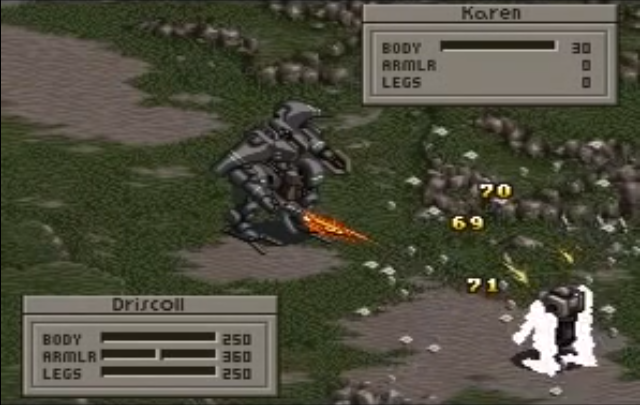Into the Breach is Cliqist’s Game of the Month for March 2018. As such, we’ll be exploring the influences, both mechanical and stylistic, that converge in Subset Games’ newest hit title. Though it’s classified as a turn-based strategy game, Into the Breach’s biggest influences come from Japanese tactical role-playing games (TRPGs).
While the TRPG genre had fallen out of popularity among western audiences, they’ve seen a resurgence in recent years. But where does Into the Breach fit into the mix, and how exactly has it innovated on popular formula?
On the Shoulders of (Robot) Giants

The clearest inspirations for Into the Breach‘s tactical style come from the early 90s. The earliest RPGs of the 80s were designed in part as an attempt to emulate tabletop games like Dungeons & Dragons. As such, they tended towards sword and sorcery settings. Games like Super Robot Wars (1991) and Front Mission (1995) were among the first to include mecha as a prominent part of their setting.
Giant robots had been a staple in anime and manga from the beginning of the medium, and Super Robot Wars set itself up as the stage for the collision of all the most popular franchises. Mecha from series like Mazinger, Getter Robo, and Mobile Suit Gundam appeared together in the same game, teaming up for one of the early classics of the TRPG genre.

Front Mission, meanwhile, created its own intricate world filled with original mechs. It also featured a much starker tone. Set in the distant future of 2090, Front Mission imagined a world divided into warring global superpowers. Battles were conducted by armies of clashing wanzers (from the German Wanderpanzer, “walking tanks”). These mecha had a variety of customizable parts. But each part could be damaged in combat, hindering their performance.
While not as successful as Super Robot Wars, the Front Mission series also spawned its own franchise. Unfortunately, the series was indefinitely shelved after 2010, when the third-person shooter Front Mission Evolved released to overwhelmingly negative reviews.
The Sum of its Parts
The influence of these games on Into the Breach are immediately apparent. Super Robot Wars brought the popularity of mecha to TRPGs, and Front Mission codified well-known mechanics of the genre. You can see shades of the latter series’ weapon types in Into the Breach‘s mech classes, albeit in a simplified form.
By and large, simplicity is one of the major ways in which Into the Breach distinguishes itself. Rather than scores of playable mechs and weapons to choose from, players have fewer options. The emphasis is on depth of function over breadth. Forgoing elaborate cutscenes, Into the Breach keeps players entirely within the realm of its isometric landscape.

It’s a design philosophy that can easily be labeled as old-school or “retro.” Into the Breach looks more like the original Front Mission than anything else. But then, it doesn’t feel much like Front Mission, at least not at first. The story and political intrigue are completely absent on the surface. Combat takes a back-seat to puzzle mechanics.
Take Front Mission‘s damage mechanic, for example. The ability to target and destroy specific parts of an enemy mech is an innovated mechanic that adds an extra layer of tactical depth to the ordinary TRPG formula. It’s an addition that only really makes sense with mechanized units as well. It might seem like a failing that Into the Breach doesn’t incorporate such a mechanic, until you realize it does.
Breaking New Ground
 Front Mission’s principle of targeted damage sprawls across Into the Breach‘s entire battlefield. The mechanic isn’t absent, rather it’s completely pervasive. Buildings and civilians serve as your body, your main health bar. Your active appendages are your mechs themselves. A mech might seem to be lacking in useful options when it’s intentionally hyper-specific in its function. In thinking of each mech as a unique tool, the depth behind the simplicity becomes clear. You can keep fighting without an arm, but only at a severe disadvantage.
Front Mission’s principle of targeted damage sprawls across Into the Breach‘s entire battlefield. The mechanic isn’t absent, rather it’s completely pervasive. Buildings and civilians serve as your body, your main health bar. Your active appendages are your mechs themselves. A mech might seem to be lacking in useful options when it’s intentionally hyper-specific in its function. In thinking of each mech as a unique tool, the depth behind the simplicity becomes clear. You can keep fighting without an arm, but only at a severe disadvantage.
Ultimately, this diffusion of mechanical depth to the map rather than the unit speaks to the key difference in Into the Breach‘s philosophy. Unlike its predecessors, Into the Breach is an almost entirely defensive game. Players take the second turn in combat. They’re forced to be reactive, rather than proactive. Even in the grittier setting of Front Mission, the objective is rarely ever pure survival.

Subset Games has crafted a brilliant installment in the mecha genre, one that acknowledges the style and tactical depth of its predecessors while taking staple TRPG mechanics in its own unique direction.
For more insight into the design philosophy behind Into the Breach, check out our interview with Subset Games’ Justin Ma. If you’re as obsessed with this game as the Cliqist writing staff, you can also keep tabs on our Game of the Month master post for future Into the Breach content.



